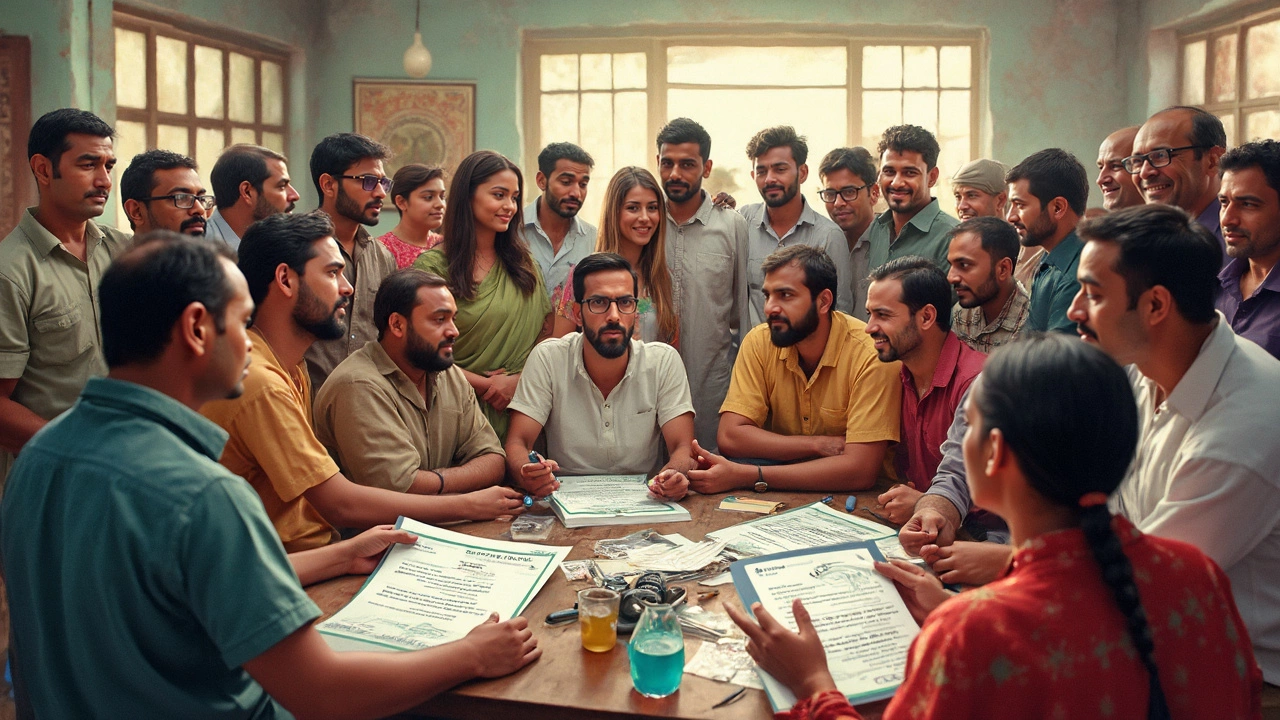So, you’ve got this brilliant idea that you reckon could be the next big thing. But how do you protect it and, more importantly, get it made? Welcome to the world of patents and small-scale manufacturing. Patenting might sound like something only inventors and big companies need, but it’s key for anyone wanting to safeguard their creative brainchild.
First off, let’s wrap our heads around what a patent actually is. Basically, it’s a legal way to claim the rights to your invention, stopping others from making, using, or selling it without your say-so. Think of it as having the keys to your idea’s castle.
But before you get rolling, you’ve got to ensure your idea is patent-worthy. This means it needs to be new, useful, and non-obvious. Sounds tricky, right? Well, it can be a bit of a maze, but nailing down these basics is the first step in your patent journey.
- Understanding Patents
- Steps to Patent Your Idea
- Finding the Right Manufacturer
- Navigating the Manufacturing Process
- Tips for Success and Common Pitfalls
Understanding Patents
Alright, let’s get into the nitty-gritty of what a patent really means. On the surface, it's a legal document you get from the government that gives you, and only you, the rights to make, use, or sell your invention for a certain period—typically about 20 years from the filing date. This means you're holding exclusive power over your creation, keeping copycat contenders at bay.
Now, to snag a patent idea, yours has to tick three critical boxes. First, it must be novel, as in, no one else in the world should've thought of this before. Second, it should be useful. We’re talking practical applications, not an invention meant to gather dust on a shelf. And last, it’s got to be non-obvious. If the average Joe in your field could have dreamt it up easily, chances are it’s not making it through the patent gate.
Patents come in a few flavors, mainly utility, design, and plant patents. Utility patents cover what your invention does, design patents protect the way it looks, and plant patents are for inventing or discovering new plant varieties. Most folks in small scale manufacturing are dealing with utility or design patents.
The beauty of patents is they provide a legal shield, but they can also be hefty investments. Filing fees, attorney costs, and maintenance can add up, so it’s wise to budget accordingly.
Want some figures to chew on? Here’s a quick look:
| Type of Patent | Approx. Cost in GBP |
|---|---|
| Utility Patent | £5,000 - £15,000 |
| Design Patent | £1,500 - £3,000 |
| Plant Patent | £3,000 - £7,000 |
The application process isn't a sprint; it’s a marathon. We’re talking 1-3 years on the timeline for approval. In the meantime, a provisional application can keep your foot in the door while you sort things out.
Understanding these basics helps set a solid foundation before diving head-first into the patent application waters. The more you know upfront, the fewer surprises down the road.
Steps to Patent Your Idea
Alright, now that you're set on patenting your idea, where do you even start? Navigating the patent process can be a bit daunting, but breaking it down into steps makes it manageable. Here’s the lowdown on getting that patent idea officially recognized.
First things first, you need to do a patent search. This means checking if anyone else has already claimed your brilliant brainwave. You can do this on official patent websites or get a professional to help out. It’s crucial, because if someone else has beaten you to it, you can’t claim it.
Next up, decide on the type of patent. Are we talking a utility patent for a new process or machine, or is it more of a design patent for a unique look? Knowing the difference saves time and headaches down the road.
With that settled, start drafting your application. This is where you lay down everything about your invention. Be detailed. The more explicit and specific you are, the better protected you are. It’s like having an airtight contract for your idea.
Consider hiring a patent attorney. Sure, it might cost a bit, but these folks specialize in navigating the patent maze. They can help polish your application and ensure everything ticks the legal boxes. As famed inventor Thomas Edison once said,
“Anything that won’t sell, I don’t want to invent.”Consulting an expert helps you sidestep potential pitfalls.
Then, you file your application with your local patent office. Be it the UK Intellectual Property Office or the US Patent and Trademark Office, this is where the magic officially begins.
- Conduct a patent search – Ensure your idea is original.
- Choose the right patent type – Determine if it’s utility or design.
- Draft your application – Be as precise and detailed as possible.
- Seek professional help – A patent attorney can be an invaluable ally.
- File your application – Submit to the appropriate patent office.
Once submitted, there’ll be some waiting involved (patience is key here), and the office might come back with questions or requests for clarification. In the meantime, get excited because, once granted, your idea is legally yours to produce, sell, or license.

Finding the Right Manufacturer
Alright, so you've got your patent in hand and now you're itching to get your idea off the ground and into production. But before you can start selling, you’ll need a manufacturer to help bring your product to life. Whether you’re looking for local options or considering overseas production, it’s crucial to choose wisely.
First things first, decide whether you want to go local or international. Local manufacturers might cost a bit more but usually offer quicker turnaround times and easier communication. Plus, supporting local businesses can sometimes be a nice feel-good bonus. However, overseas manufacturers, mostly in China or India, are often more cost-effective, especially for larger orders.
Once you've decided where you want to manufacture, it’s time to research potential partners. Start by looking for manufacturers that specialize in your product category. Check out online resources like Alibaba for international options or directories like ThomasNet for local manufacturing solutions.
Next, reach out to a few shortlisted manufacturers and ask all the right questions. Here are some must-asks:
- What's the minimum order quantity (MOQ)?
- Can they provide product samples?
- What’s their lead time for production?
- Can they handle custom designs or modifications?
- Do they have any existing clients you can speak to for references?
Don’t shy away from asking for references or checking reviews; tons of folks have shared their experiences online, and it’s a goldmine of do’s and don’ts.
Also, it could be beneficial to visit the manufacturer if possible. This helps in ensuring they meet your quality standards and allows you to have a look at their operations firsthand. If traveling is off the cards, a video call might be the next best thing.
Here's a little breakdown of production costs if you're considering international production:
| Cost Element | Approximate % of Total Cost |
|---|---|
| Material Costs | 40% |
| Labor Costs | 25% |
| Shipping and Logistics | 15% |
| Taxes and Duties | 10% |
| Miscellaneous | 10% |
Choosing the right manufacturer is a pivotal step on your way to successful small scale manufacturing. So be patient and don't rush into any agreements until you’re certain you've found the perfect partner to produce your brainchild. This partner will be key to transforming your patent idea into a tangible product.
Navigating the Manufacturing Process
Alright, so after getting the patent sorted, the next big adventure is getting your product actually made. This is where things can get a bit gritty, but stick with me, and I'll walk you through it. You'll need to figure out how to go from idea to actual product, and there are a few steps to this puzzle.
First thing's first, decide on the kind of small scale manufacturing you need. Are you looking to make a limited number of units to test the waters, or are you planning for something a bit more substantial? Knowing this upfront helps target the right manufacturers.
Next, it's time to scout for a manufacturer. A great starting point is checking out online manufacturing directories or even trade shows. These places are goldmines for finding folks specializing in different product types. Keep an eye out for manufacturers who have experience with products similar to yours. It smoothens the path because they already understand the quirks and challenges involved.
- Prototype Development: Start small. Get a prototype made. This is like a rough draft of your product. It'll help you test the practicality and design before diving into full production.
- Material Selection: Choose the right materials. The quality, cost, and availability can significantly impact your product's success.
- Quality Checks: Regularly check the quality during production to avoid any nasty surprises later. Manufacturers should be comfortable with this setup.
- Packaging and Branding: Don’t underestimate it. Your product’s presentation can make a difference.
Communication is key throughout this journey. Make sure both you and your manufacturer are on the same page regarding deadlines, costs, and any other terms. Having everything in writing can save a ton of headaches later.
The cost of manufacturing is another piece of this puzzle. Make sure you know your budget. The more detailed your plans, the less likely you’ll end up with unexpected costs. Request quotes from different manufacturers to compare prices, but don't just go for the cheapest option. Quality and reliability are crucial. You don’t want to save a penny here, only to fall short later.

Tips for Success and Common Pitfalls
Navigating the patent process and getting your idea made can feel like a rollercoaster. Here’s how to keep things running smoothly and dodge the usual traps.
Tip #1: Do Thorough Research
Before you even think about the patent application, do a deep dive into existing patents. You don’t want to spend money only to find out someone else got there first. Use databases like Google Patents to save yourself a headache.
Tip #2: Get Expert Help
Sure, you could go it alone, but having a patent attorney in your corner can be a game-changer. They know the paperwork inside out and can guide you through the quirks of patent law.
Tip #3: Prototype Like a Pro
Building a prototype before full production can help you spot design flaws early. Plus, it makes your pitch much more attractive to potential manufacturers. It’s like giving your idea a test drive.
Common Pitfall #1: Rushing the Process
The patent game isn’t about speed. Jumping too quickly without solid prep can lead to mistakes. Your idea is exciting, but taking it slow and steady wins here.
Common Pitfall #2: Underestimating Costs
Patenting isn’t free. Factor in fees for the patent application, legal support, and prototype costs. Some folks use crowdfunding to offset these expenses, while others save up in advance.
Another smart hack is connecting with small businesses in your area. In Manchester, for instance, many local inventors have discovered that networking events and meetups can be priceless for tips and potential collaborations.

